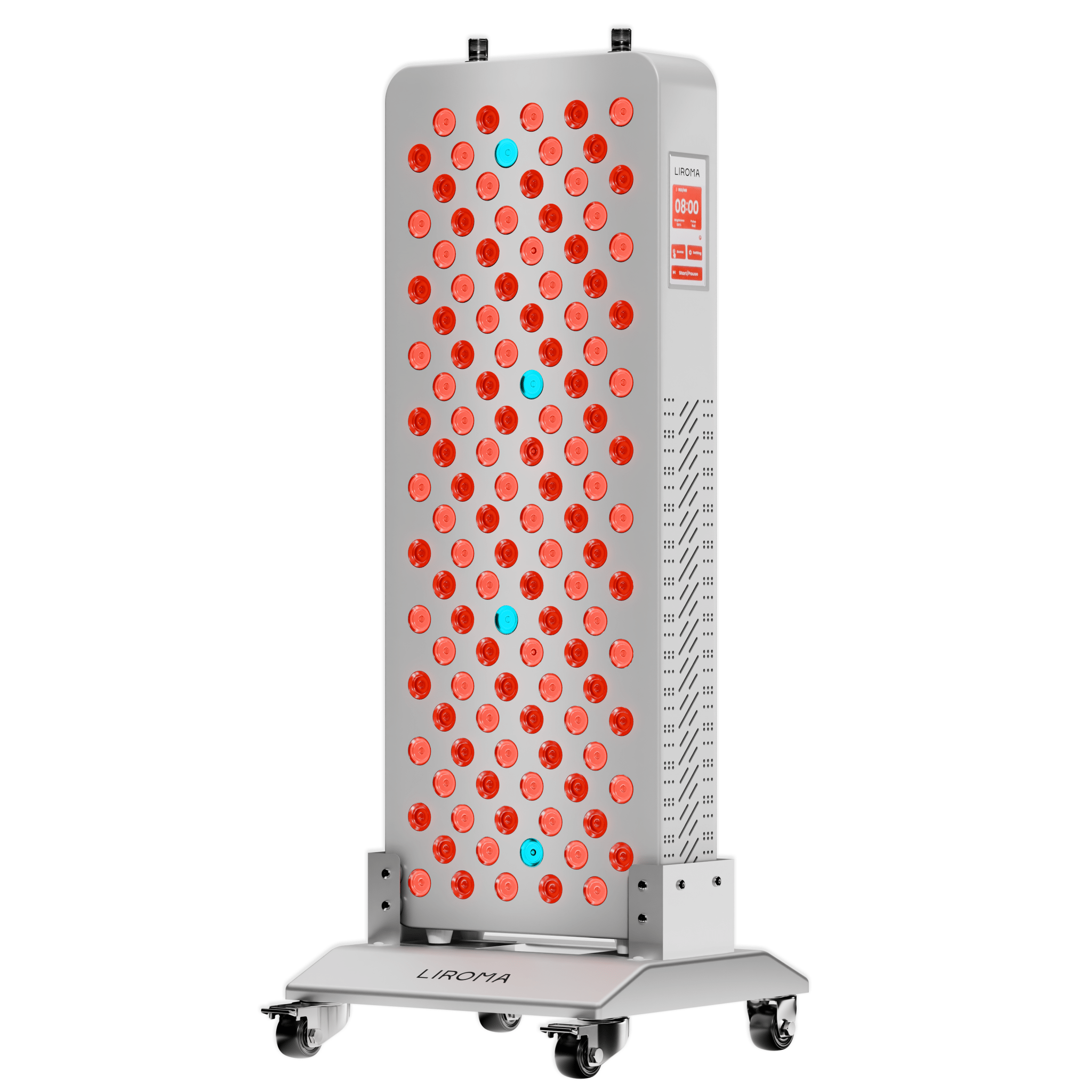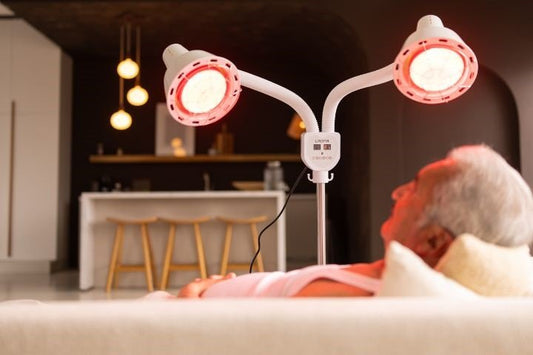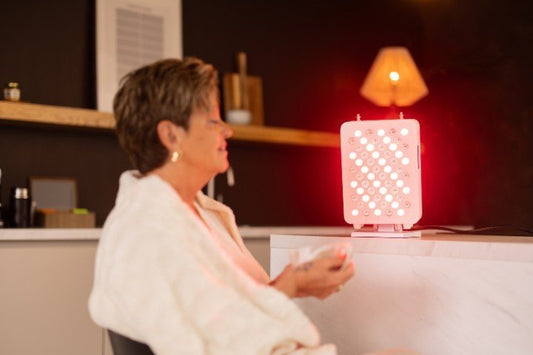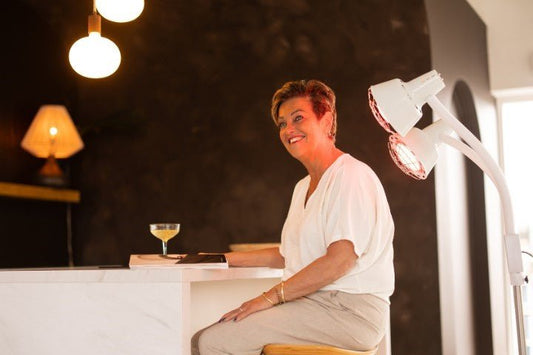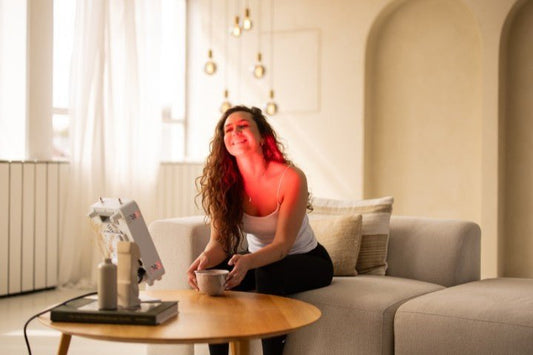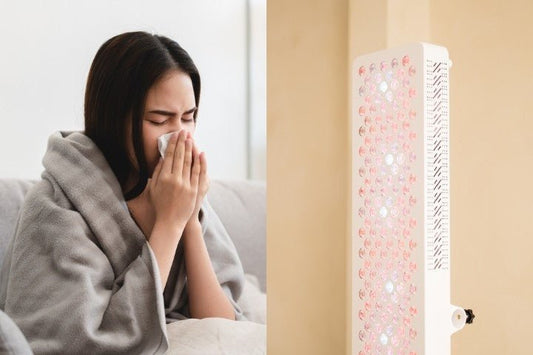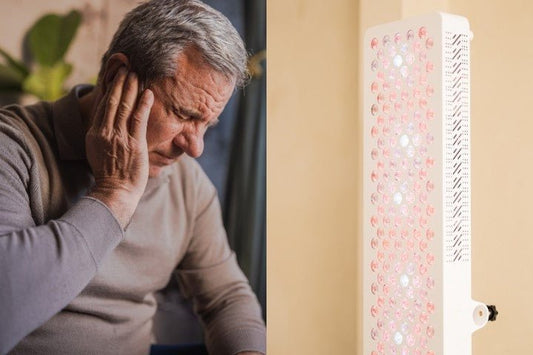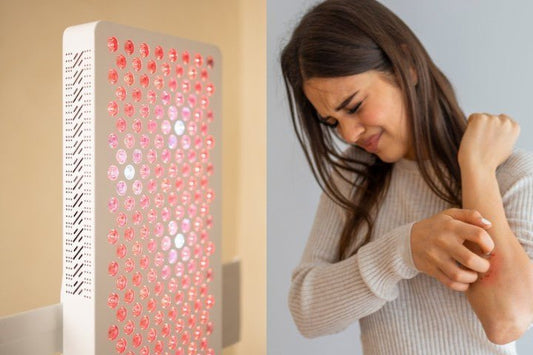Red light therapy is rapidly gaining popularity, and for good reason. From skin improvement to muscle recovery, the applications are endless.
But how often do you actually use such a red light bulb? And how do you know if you're doing it right? In this blog we dive into the ideal frequency, treatment time ánd we give you useful tips to get the most out of your sessions.
Caution! The text below does not serve as medical advice. This text was compiled based on our own knowledge, customer experiences and various online sources.
Table of contents
What is red light therapy? Operation & Benefits
How often can you use a red light panel??
Calculate your ideal treatment time
Risks and precautions
Important terms, clearly explained
Combination with other treatments
Summary

What is red light therapy? Operation & Benefits
Red light therapy, also called low-level light therapy or photobiomodulation, is an innovative treatment method using red and near-infrared light.
This type of light penetrates deep into the skin and stimulates cellular processes without heating or damaging the skin. The therapy is used for a variety of purposes: from skin rejuvenation and wound healing to muscle repair and pain relief.
How does it work?
When your skin cells are exposed to red or infrared light, the mitochondria, the energy factories of your cells, respond with increased ATP (energy) production. This stimulates cell repair, anti-inflammation and improved blood flow.
Depending on the wavelength (usually between 630 and 850 nm), light penetrates to different depths:
- Red light (630-660 nm): more suitable for superficial applications such as skin improvement.
- Near-infrared light (810-850 nm): reaches deeper tissues, such as muscles and joints.
Want to know more? Read our “How does RLT work?” page.
What are the benefits?
- Reduction of fine lines and wrinkles
- Faster recovery of muscles and joints
- Relief from chronic pain
- Improved sleep quality
- Address skin problems such as acne, eczema or scars
- Support wound healing
Please note that the effect varies from person to person. Your skin type, age and health play a role in this.

How often can you use a red light panel?
Perhaps the most frequently asked question: How often is too often? The recommended frequency depends on your goal, the type of device and your personal response to therapy. In general:
- Start slowly: 2 to 3 times per week
- Build up: to 4 to 6 times per week
- Session duration: 10 to 20 minutes each time
For some acute situations, such as wounds or muscle pain, daily use can be temporarily effective. However, pay close attention to signals from your body, such as redness or sensitivity. Listen to your skin.
Tip: Doing more does not automatically mean more results. Balance is key.
Calculate your ideal treatment time
Every skin and every device is different. That's why it's smart not to guess, but to calculate. The optimal treatment duration depends on three things:
- Light intensity of your device (in mW/cm²)
- Desired dose (in J/cm²)
- Distance to the skin
The formula
Treatment time (seconds) = (J/cm² × 1000) ÷ mW/cm²
Example: Suppose you want to receive a dose of 10 J/cm² with a device delivering 37 mW/cm² at 30 cm distance. Then you calculate:
10 × 1000 / 37 ≈ 270 seconds (or 4.5 minutes)
Please note that many devices over-report light intensity, especially if measured with a solar power meter. Always check that the measurement was made with professional measuring equipment.
More is not always better
Red light therapy works according to the biphasic dose response:
- Too low a dose is ineffective
- Too high a dose is even counterproductive
So the trick is in finding that “sweet spot” in which your body responds optimally. Scientist Michael R. Hamblin emphasizes this over and over again: sometimes less really is more.

Risks and precautions
While red light therapy is generally safe, there are a few things to keep in mind:
- Always wear appropriate goggles during facials unless you are sure your device is safe for direct exposure.
- Keep the distance consistent, as indicated in your LED lights' manual.
- Do not use the device on damaged or burned skin unless specifically recommended.
- Consult a physician for medical conditions or if you are taking medication that increases light sensitivity (such as certain antibiotics).
Important terms, clearly explained
Below are some of the terms commonly encountered in red light therapy:
- J/cm² (joules per cm²): the amount of energy delivered to a given area of skin.
- mW/cm² (milliwatts per cm²): the light intensity, or how much power your device delivers to the skin.
- Treatment time: how long you focus the light on your skin to achieve the desired dose.
- Biphasic dose response: the effect that both too little and too much light gives less results than the correct, optimal dose.
- Solar power meter: a measurement tool that is often inaccurate for red light therapy and leads to overestimated values.

Combination with other treatments
Red light works well on its own, but can be even more powerful when combined with other treatments. After a session, your skin often absorbs skin care products such as serums or creams better, so it's best to apply them immediately afterward.
Red light is also a valuable addition when combined with physical therapy or muscle recovery. Add in healthy habits, such as adequate exercise, water and good nutrition, and you'll amplify the effect of your entire routine without the hassle.
Summary
Red light therapy is a powerful and natural way to support your health and appearance. The key to success? Not simply “more and longer,” but targeted and balanced use. By fine-tuning your goal, skin type and the technical specifications of your device, you'll get the most out of your sessions.
Ideally, use your red light lamp 3-5 times a week, with sessions between 10 and 20 minutes. Calculate your ideal treatment time using the formula we shared above.


